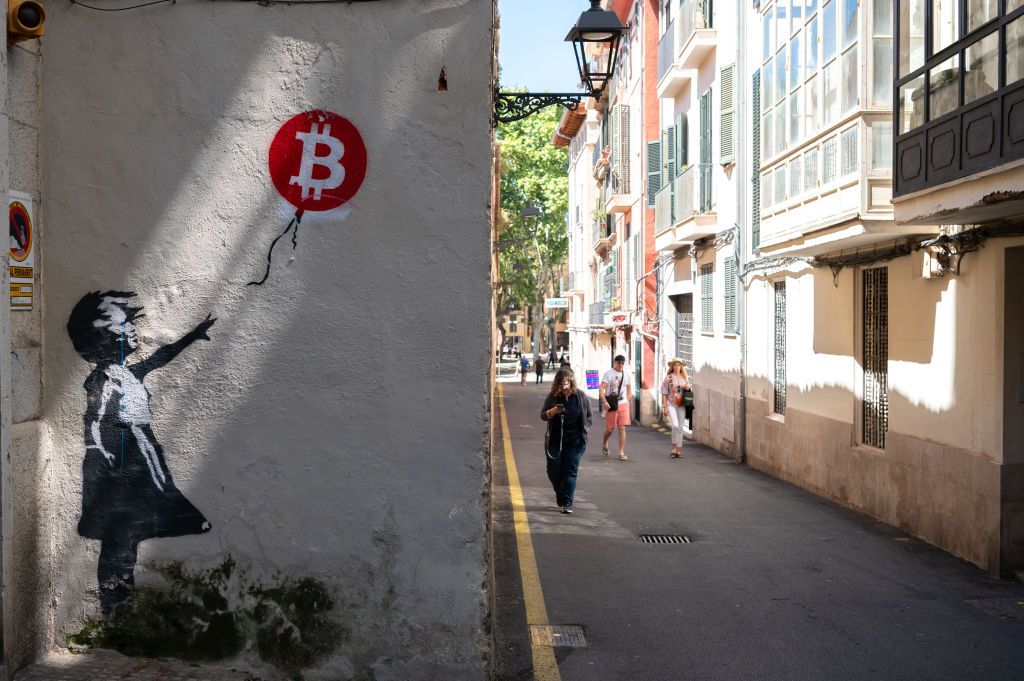Last week marked the one-year anniversary of Ethereum’s historic “Merge” – the shift to a more energy-efficient proof-of-stake network. But in some ways the largest smart-contract blockchain has become a victim of its own success: Staking is so popular that the number of network validators is mushrooming toward 1 million, introducing new concerns related to the sprawl. We discuss how Ethereum developers are addressing the issue with the EIP-7514 proposal.
Also in this week’s issue:
You’re reading The Protocol, CoinDesk’s weekly newsletter that explores the tech behind crypto, one block at a time. Subscribe here to get it every week.
Network news
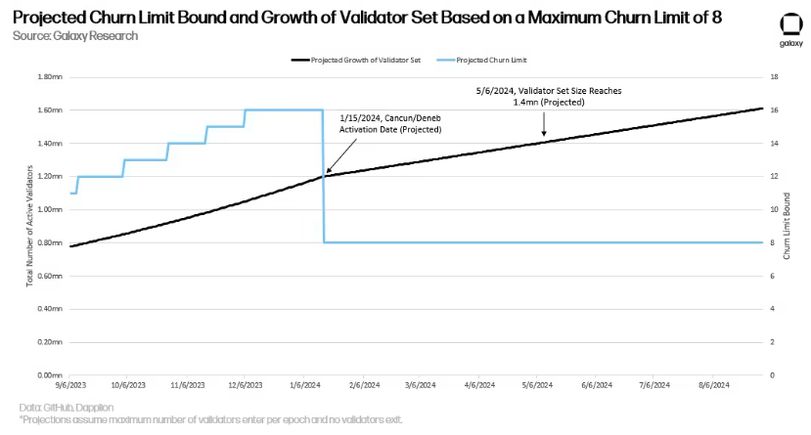
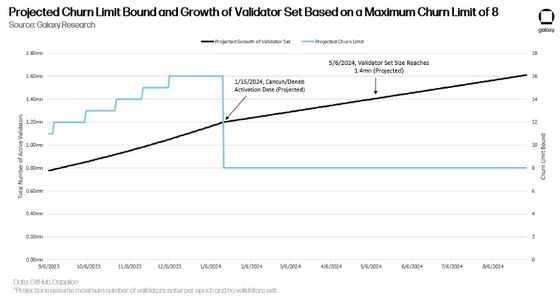

Chart from Galaxy Research shows how the projected growth of Ethereum validators would slow based on the EIP-7514 proposal.
CROWD CONTROL: Ethereum has been so successful in attracting new validators for its proof-of-stake blockchain that the network is now starting to suffer from sprawl. There are nearly 800,000 active validators on the network, up about 41% since April’s “Shapella” upgrade, when withdrawals of staked ETH were first allowed, according to a Sept. 14 report by Galaxy Research’s Christine Kim. Based on certain assumptions, the number is on track to hit 1 million by mid-November and 2 million by June 2024. “Ethereum is getting close to reaching an unsustainable number of active validators,” Kim wrote. It’s pretty technical, but network “latency” is becoming a key problem, according to the report: There’s been “an increasing frequency of block reorgs and missed blocks in the first two slots of an epoch, likely due to increasing latency in attestation aggregation.” Developers have formalized EIP-7514 – an improvement proposal that would help, at least in the short term, by limiting entries of new validators to 8 per epoch (roughly 12 seconds), down from the current rate of 12. Another major concern from the rapid proliferation of validators, according to the Ethereum Foundation’s Dankrad Feist in a recent post, is that staking is becoming too concentrated in the hands of Lido, the biggest protocol for so-called liquid staking tokens. The plan to reduce the “churn limit” for new validators could be a stopgap measure for a more “elegant” fix down the road, Feist wrote.
OPTIMISM OPPORTUNISM: Much of this year’s news on the layer-2 blockchain Optimism network, supported by the developer OP Labs, has revolved around the OP Stack – a set of software tools that can be used to spin up new layer-2’s that are essentially modified clones of Optimism. Among them is Coinbase’s Base blockchain, which has quickly climbed in the project rankings since its launch last month, partly thanks to the popularity of the Friend.tech social media platform. But in terms of providing an additional jolt of, well, optimism into the project, there’s often nothing like free money giveaways. And this week, the Optimism Foundation announced its third community airdrop, with more than 31,000 unique addresses receiving about 19 million OP tokens, worth $27 million. Even in the depths of crypto winter, some teams are still flush with pools of money (often in token form) that can be used to incentivize users to transact on these nascent networks. A further 570 million OP tokens have been allocated to future airdrops.
ALSO:
“Many teams are running out of funds.” (Wu Blockchain)
Infamous Avalanche developer Daniele Sestagalli has started a new project called WAGMI – a common acronym in crypto-trader trash-talk for “We’re all gonna make it.” Sestagalli was behind once-top projects like Wonderland, a treasury-backed currency protocol, and Abracadabra, a platform that provides collateral based on yield-bearing assets deposited by users.
Coinbase “has shown no willingness” to return $1.06M validator fee netted from a trading bot in wake of July’s $73M hack of the DeFi protocol Curve – and it’s not obligated to.
Coinbase’s Base blockchain sets new record for daily transactions, at 1.88 million, higher than layer-2 rivals Arbitrum and Optimism combined.
Bitcoin miner F2Pool has returned 19.8 BTC to Paxos, after the crypto services firm mistakenly paid a $520,000 fee on a $2,000 transaction.
South Korea’s crypto ecosystem shakes off Terra debacle, with gaming dominating Web3 activity.
Dallas Mavericks owner and billionaire technology investor Mark Cuban lost some $870,000 worth of tokens – drained of U.S.-pegged stablecoins, staked ETH (stETH), SuperRare (RARE) tokens, and some Ethereum Name Service (ENS) domains. He told DLNews that it happened after he tried to open his MetaMask wallet “for the first time in months.”
Protocol Village
Highlighting blockchain tech upgrades and developments.



Polkadot founder Gavin Wood. (Parity Technologies)
Money Center



Blockchain Capital co-founders Bart Stephens and Brad Stephens (Blockchain Capital)
Fundraisings
Deals and grants
Data and tokens
Homing in on the ‘Coinbase 10’ Blockchain Address
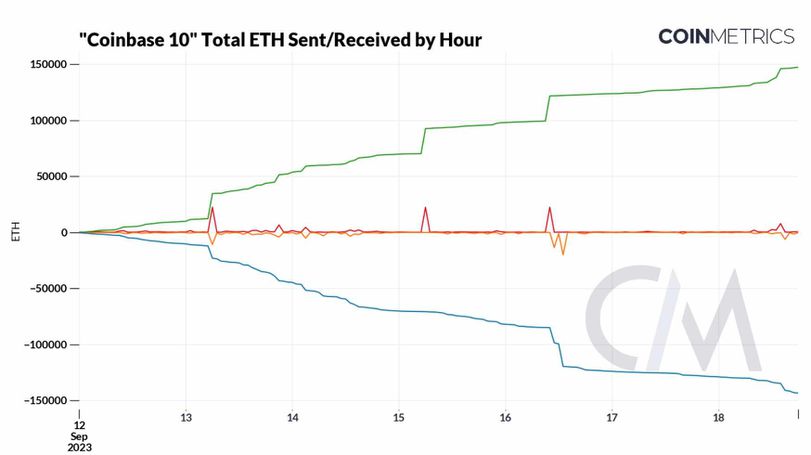
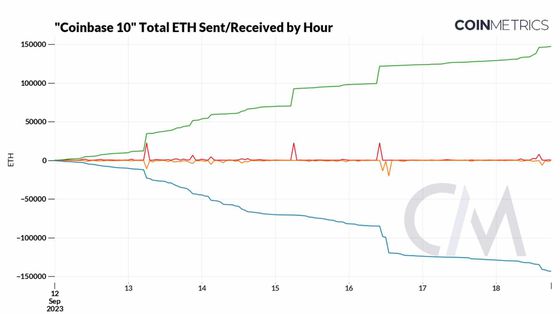

The “Coinbase 10” wallet has seen a dramatic increase in its total ETH sent and received hourly. (Coin Metrics)
Blockchain sleuths have proven relentless in their efforts to identify the holders of key addresses – for insights on their underlying activity. in a report this week, Coin Metrics analyzed on-chain data for clues on the big U.S. crypto exchange Coinbase. “From the vantage point of an on-chain data analyst, Coinbase has historically proven to be a difficult entity to examine, as it has taken sophisticated actions to secure user funds across many accounts,” according to Coin Metrics. But the firm managed to identify an active address labeled “Coinbase 10” on Etherscan, and then plotted the hourly changes in ETH sent and received by the account. “With close to 150K ETH sent and received, this account is one of the top accounts by ETH volume in that same time period,” the analysts determined.(Dune Analytics/TokenInsight)
In Case You Missed It
Please check out CoinDesk TV’s interview Wednesday with Fahmi Syed, CFO of the Polkadot-focused developer Parity Technologies. (7 minutes)
Calendar






